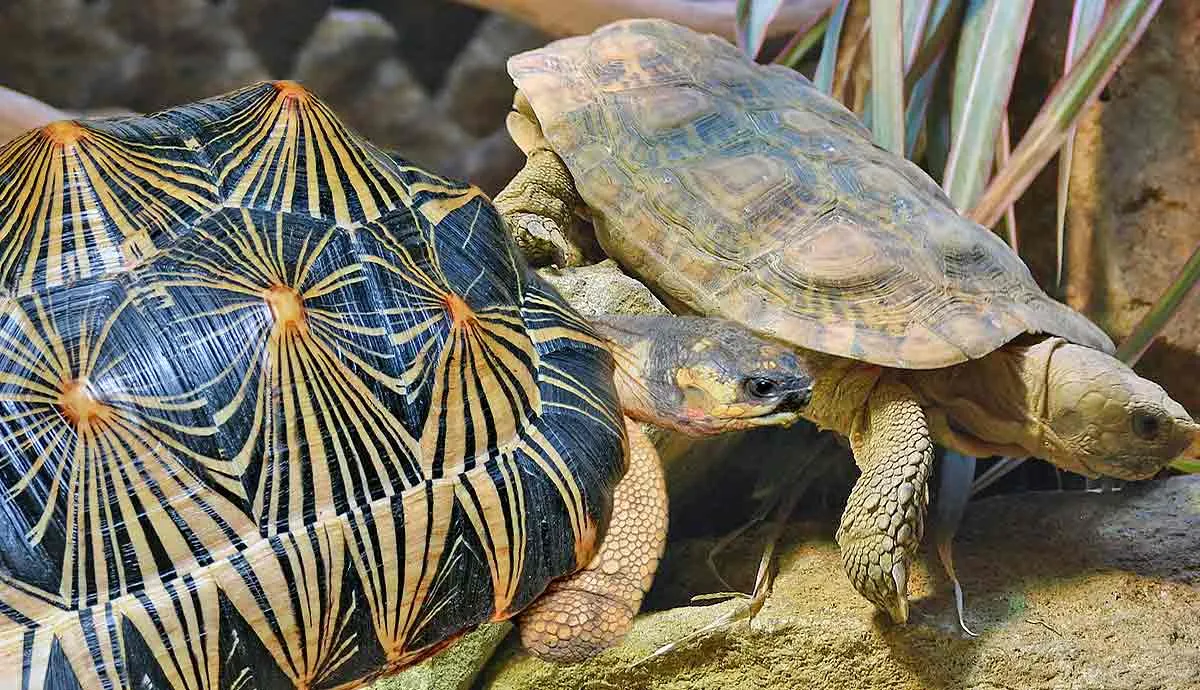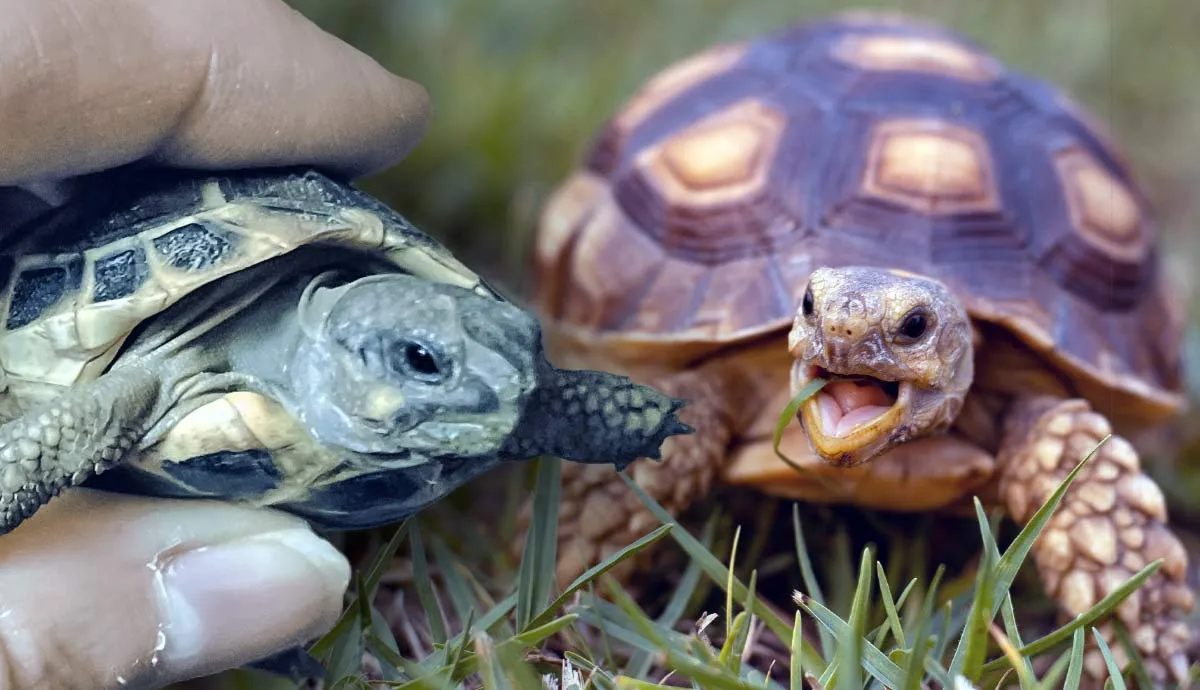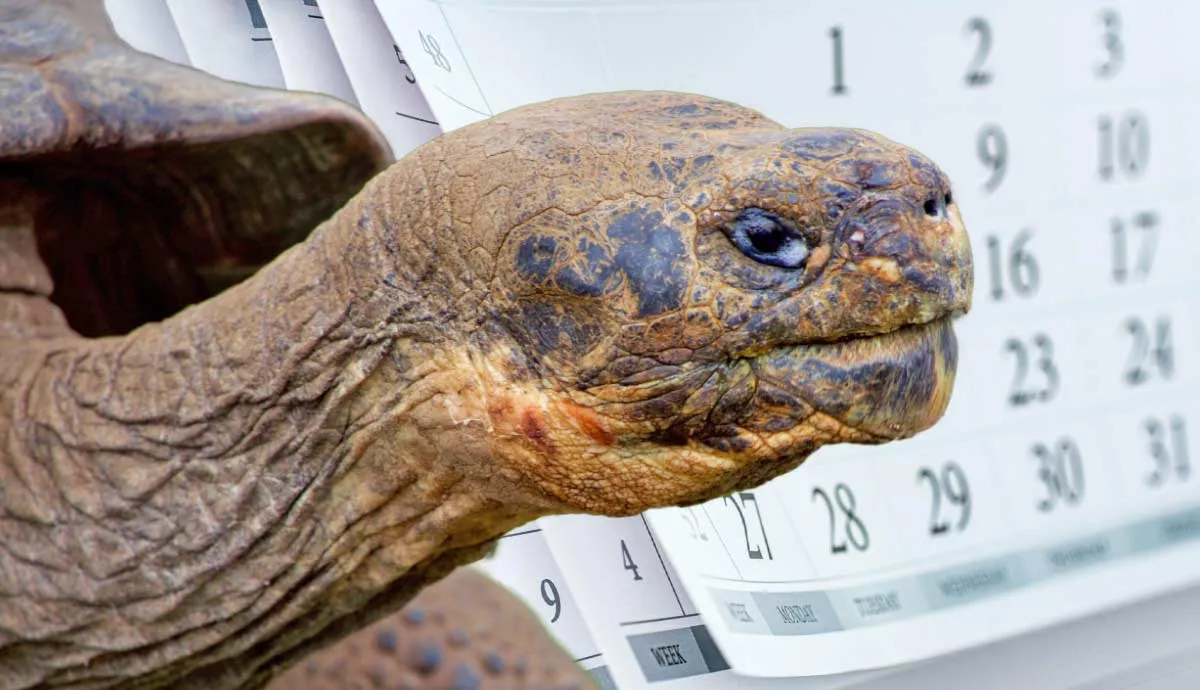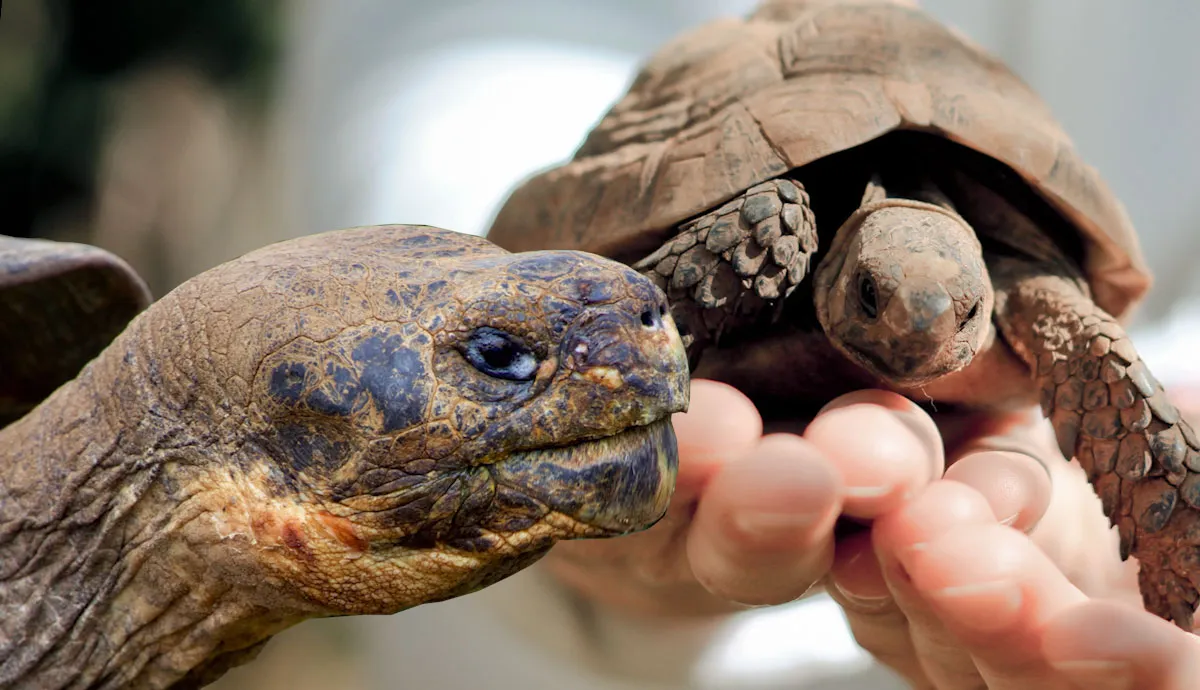I’m new to tortoise keeping, and while learning about their care needs, I was surprised to discover that they benefit from a soak in water. I also noticed that my little guys enjoy bathing in their water dish, which made me wonder, can tortoises swim? I’ve discovered that the answer isn’t straightforward, so let’s splash into the facts about tortoises and swimming below.
Can Tortoises Swim?
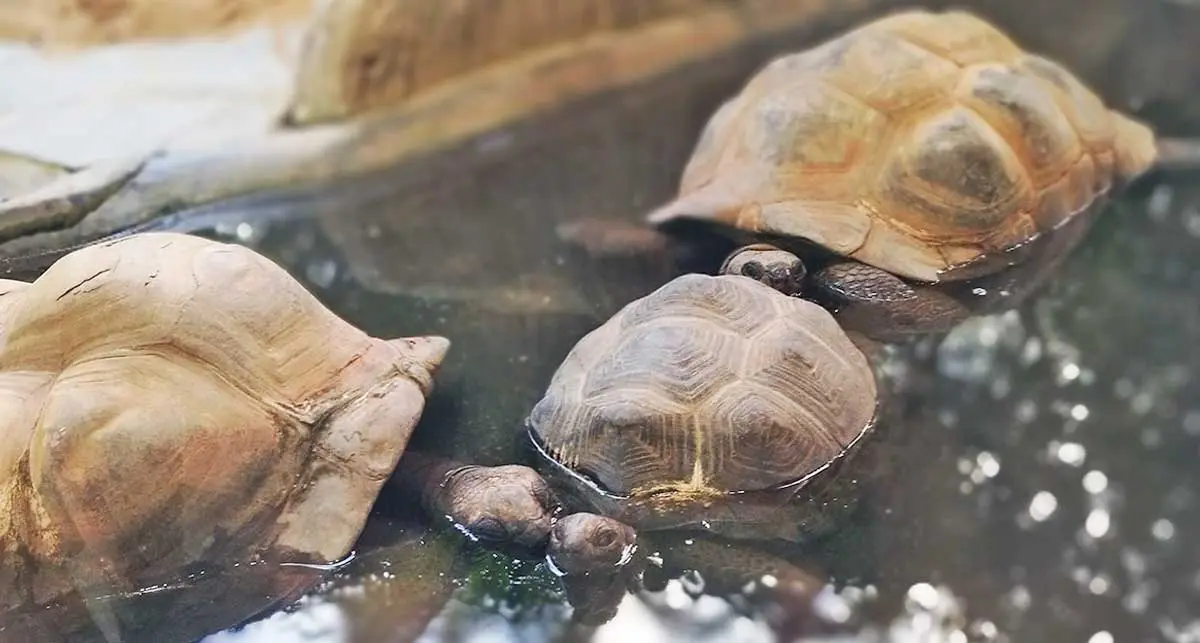
The short answer to the question "Can tortoises swim?" is yes - tortoises can swim, but usually, they can't swim well or for long distances. Unlike their close cousins - Turtles, tortoises are designed to live on land and don't have the correct anatomy for swimming.
That’s not to say tortoises don't like being in the water. Most of them love sitting in a shallow pool - and it keeps them hydrated, which is essential for their health. But, if you put a tortoise in a deep pool of water, such as a lake or river, there is a chance they might drown.
This can be a problem for wild tortoises living near rivers or lakes. Sometimes, a caring passerby will launch a tortoise into the water by mistake, thinking they are helping a lost turtle back to safety. Many people don't know the difference between tortoises and turtles. It doesn’t help that people often use the word turtle to describe both. Though they are similar, they are also very different. So, let’s briefly clear it up:
Tortoise vs. Turtle: The Main Differences

Tortoises, Sea Turtles and Freshwater Turtles are unique animals that lived alongside dinosaurs. They are Chelonians - part of the Testudines family and are closely related. But they all have different anatomy, which makes them suitable for either the sea or land:
- Sea Turtles - have a flat, smooth, streamlined shell and fins instead of legs and feet. They are fast and agile in the water but don't move well on land.
- Freshwater Turtles (terrapins) - have a flat shell, long, elegant legs, and webbed feet. They move effortlessly in the water and across land.
- Tortoises - Tortoises have stubby little legs with elephant-like, clawed feet, and most species have a high, domed shell. They move effortlessly across uneven terrain, but most species struggle in the water.
Are Tortoises Good Swimmers?
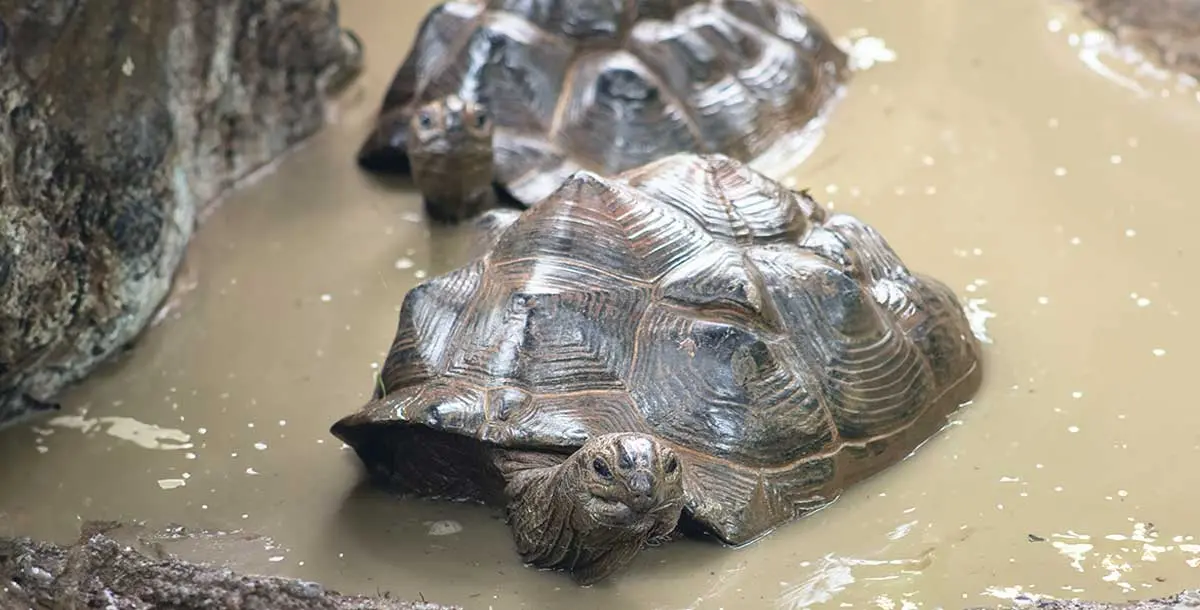
So, we’ve busted the myth that tortoises can't swim, but how good are they at swimming? If you look online, you can find many stories of tortoises swimming and even a video of a swimming Sulcata. But overall, tortoises aren’t good swimmers. If they find themselves in deep water, it’s down to luck whether they survive.
Most tortoises can float and propel themselves with their little stumpy legs. Depending on its size, spices, and weight, a tortoise in calm, warm water might make it to shore. If you throw a tortoise into choppy water, however, there’s a good chance it will drown. Interestingly, even though they're technically not designed for swimming, most tortoises can hold their breath. If you watch a tortoise drink, it will often dip its whole head and face into the water.
Can Some Tortoise Species Swim Better Than Others?

Some tortoise species are better swimmers than others. Their swimming abilities all depend on their native environment. So, if a tortoise comes from a wetland area - it will generally be a better swimmer than a desert species. There are exceptions, of course. The Leopard tortoise comes from the African desert but is an excellent swimmer. They don't have a protective scute over their neck, so they can easily lift their head out of the water to breathe.
The Indian Star is a fascinating tortoise species, and they come from tropical places where they experience the monsoon. This means they are more capable than most species in the water. The Yellow Footed Amazon and Succula also have a reputation as good swimmers.
A tortoise's swimming ability also depends on its size, weight and stature. A small tortoise with a flat shell will have a better chance of floating than a heavy, large-domed tortoise.
Do Tortoises Like Being in Water?
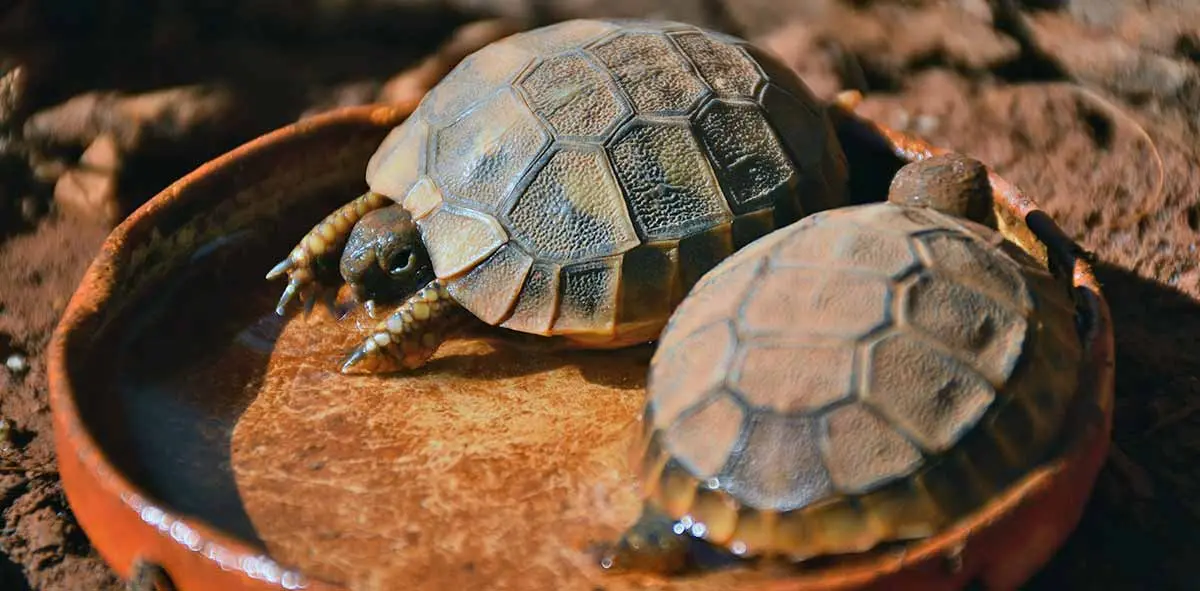
Most tortoises like being in shallow water, but some enjoy it more than others - it depends on their species and personality. One of my hatchlings takes a morning dip in the water dish as a part of its daily wake-up routine. Baby tortoises, in particular, benefit from regular bathing to help with development - and to keep them hydrated.
As a loving tortoise parent, you should bathe your shelled buddies as part of your regular tortoise care routine. Hatchlings need a bath daily or every other day and older tortoises also appreciate a soak. You can bathe juveniles 2-3 times a week and adults weekly.
How to Bathe a Tortoise Safely

The first thing you must know about bathing a tortoise is that deep water is dangerous for them - they aren't good swimmers and can easily drown. Never put a tortoise in deep water. I should also mention that it’s normal for tortoises to poop during bathing, so don’t worry about accidents.
Stick to the safety tips below to keep your little ones safe during bathtime:
- Use a deep container - so they can't climb out.
- The water must be shallow - just enough to reach above the point where the top shell meets the bottom shell.
- Never leave them unsupervised - they can flip over.
- Use lukewarm water - top up as necessary to keep it warm throughout the bath.
- Never use soap or chemicals - if you need to wash your tortoise, use a soft cloth or brush.
- Leave them in for 10 - 20 minutes.
- Dry them thoroughly afterward - damp tortoises are susceptible to shell rot.
- Never put a tortoise into deep water - if a tortoise gets into deep water - remove it immediately.


